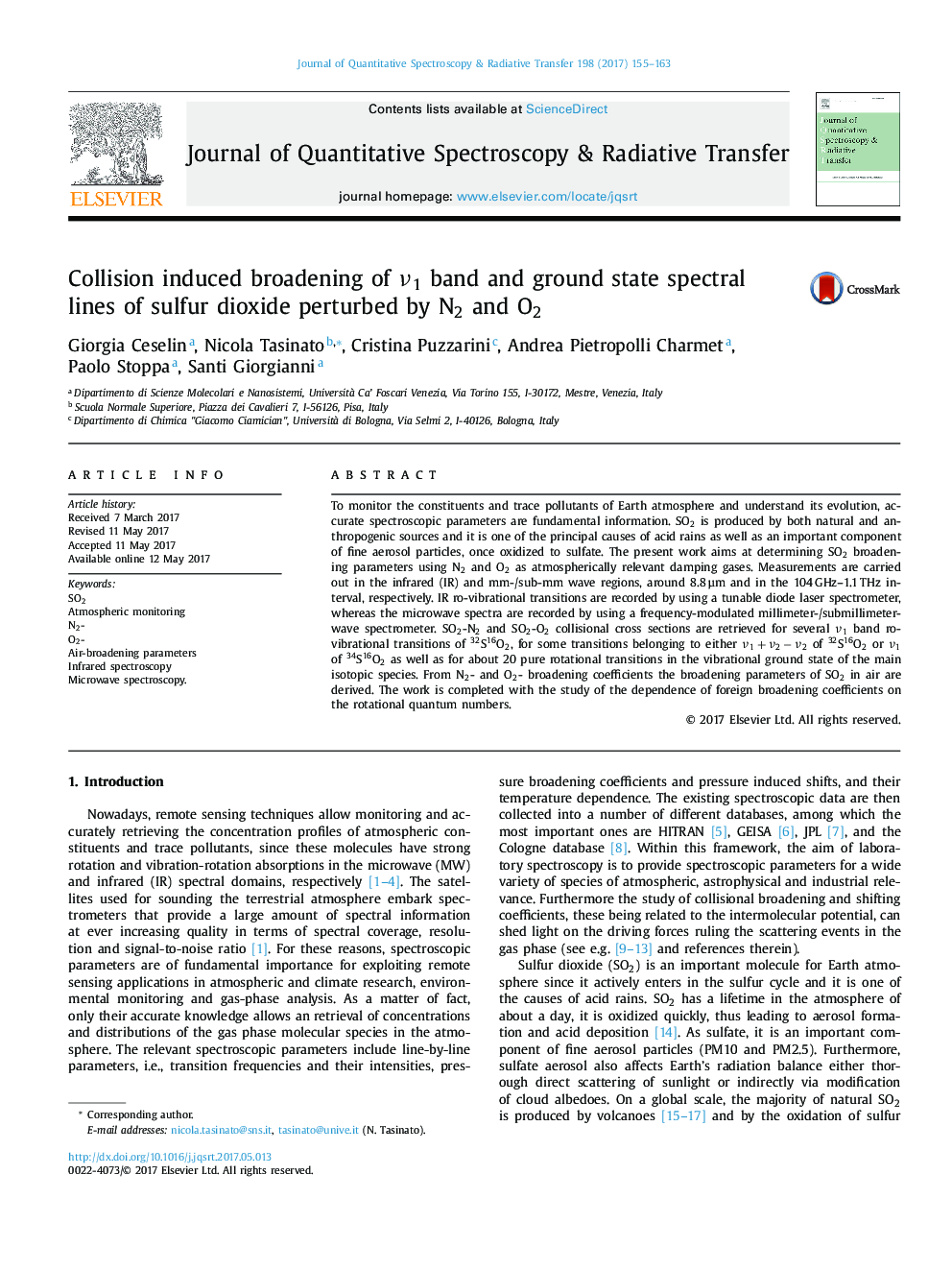| Article ID | Journal | Published Year | Pages | File Type |
|---|---|---|---|---|
| 5427104 | Journal of Quantitative Spectroscopy and Radiative Transfer | 2017 | 9 Pages |
â¢SO2 spectroscopic parameters for remote sensing of Earth atmosphere.â¢New determination of N2-, O2- and air-broadening coefficients.â¢IR TDL spectroscopy within the atmospheric region around 8.8 µm.â¢mm-/sub-mm wave spectroscopy in the 104 GHz-1.1 THz spectral range.â¢Kâ²â²a and Jâ³ dependence of SO2-N2 and SO2-O2 broadening parameters.
To monitor the constituents and trace pollutants of Earth atmosphere and understand its evolution, accurate spectroscopic parameters are fundamental information. SO2 is produced by both natural and anthropogenic sources and it is one of the principal causes of acid rains as well as an important component of fine aerosol particles, once oxidized to sulfate. The present work aims at determining SO2 broadening parameters using N2 and O2 as atmospherically relevant damping gases. Measurements are carried out in the infrared (IR) and mm-/sub-mm wave regions, around 8.8 µm and in the 104 GHz-1.1 THz interval, respectively. IR ro-vibrational transitions are recorded by using a tunable diode laser spectrometer, whereas the microwave spectra are recorded by using a frequency-modulated millimeter-/submillimeter-wave spectrometer. SO2-N2 and SO2-O2 collisional cross sections are retrieved for several ν1 band ro-vibrational transitions of 32S16O2, for some transitions belonging to either ν1 + ν2 â ν2 of 32S16O2 or ν1 of 34S16O2 as well as for about 20 pure rotational transitions in the vibrational ground state of the main isotopic species. From N2- and O2- broadening coefficients the broadening parameters of SO2 in air are derived. The work is completed with the study of the dependence of foreign broadening coefficients on the rotational quantum numbers.
